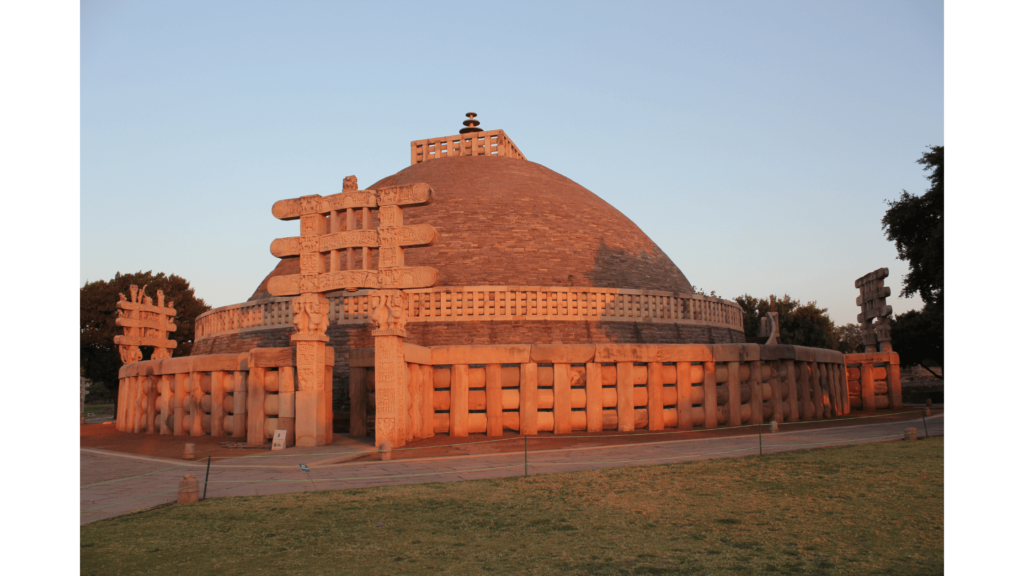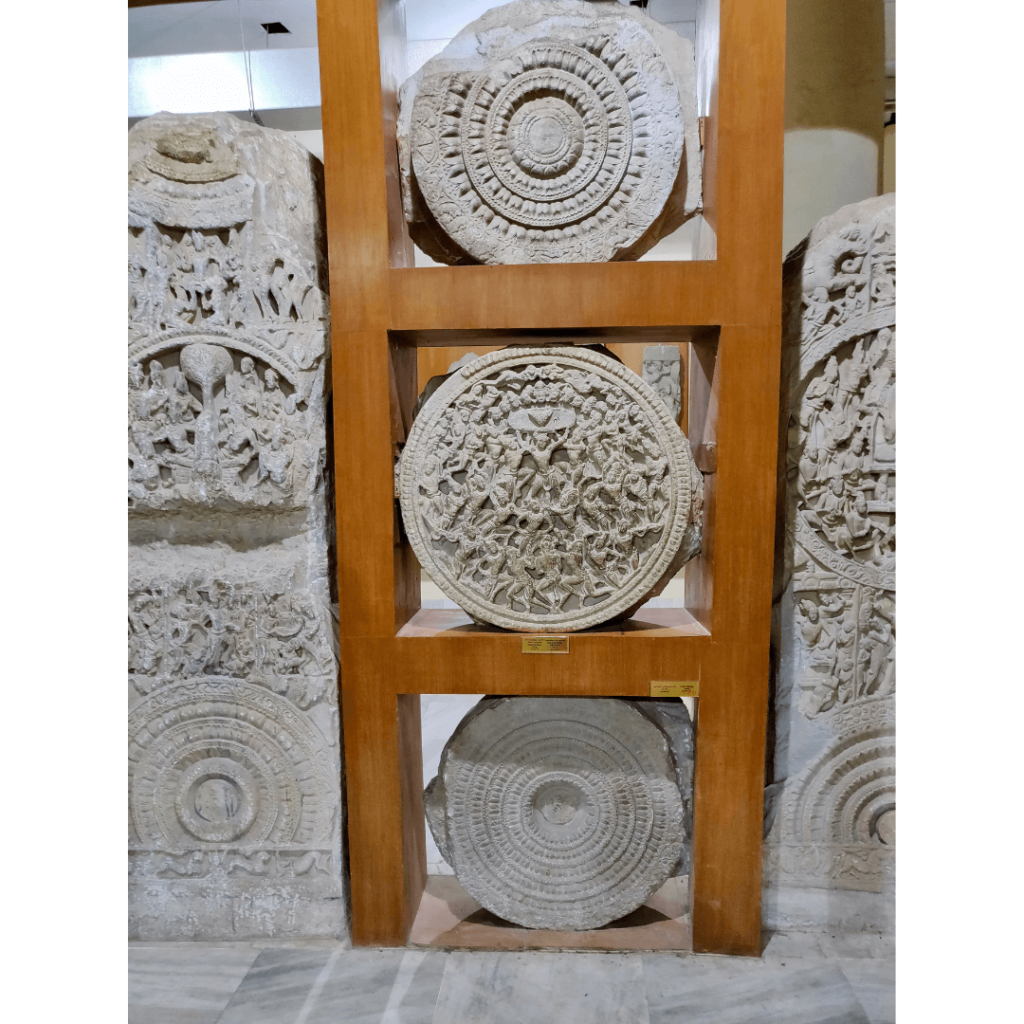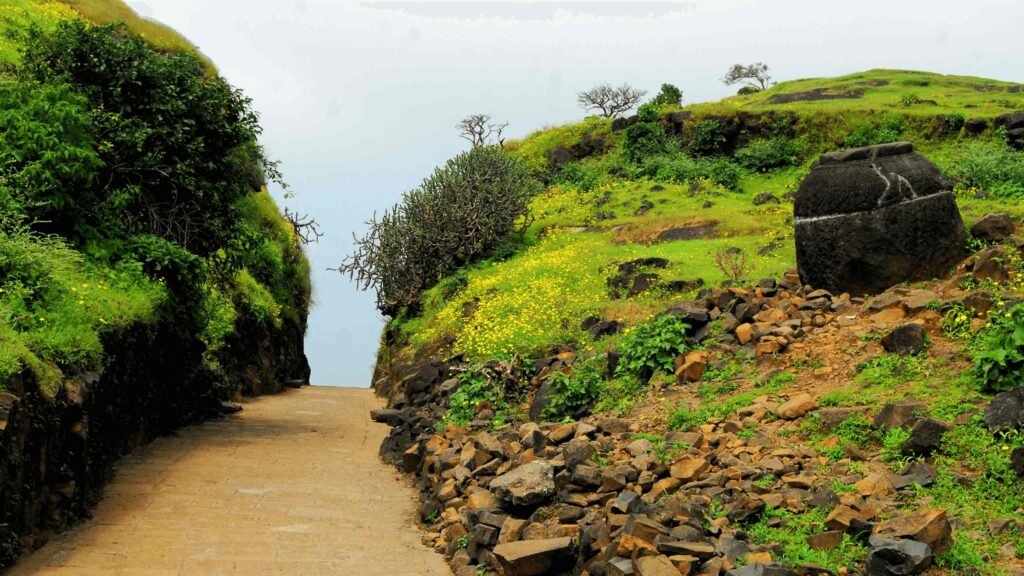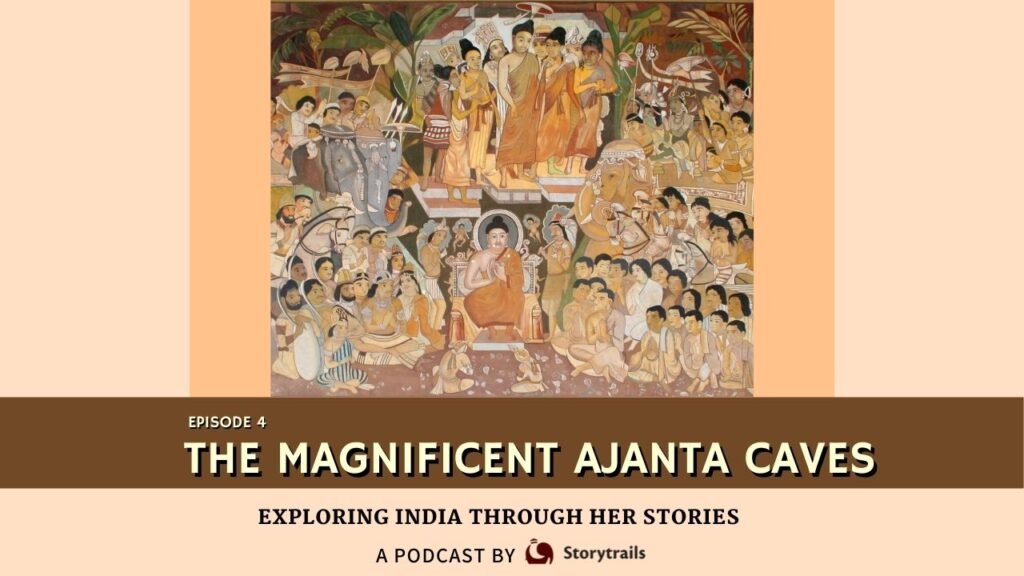It is possibly the oldest stone monument in India. Your history teacher may have taught you that it was built by Ashoka the great of the Mauryan dynasty. And you have probably seen it in umpteen travel brochures. You know the Sanchi Stupa, of course. Can you conjure up a mental picture of the monument? Does it look like this?

But can you guess which part of the structure was built by Ashoka? If you answered “All of it” – Congratulations; you remembered everything your history teacher taught you.
But your teacher was wrong. The right answer is, “None of it!”
Surprised?
How old is the Sanchi Stupa?
The original Sanchi Stupa was built by emperor Ashoka, who died in 232 BCE. But this Stupa was vandalised about a century after it was built.
Detour: But just why did Ashoka build the Sanchi Stupa? Therein lies an incredible tale. Watch that story in this short video: Ancient stone caskets that stored Buddha’s relics I Sanchi Stupa.
Around 145 BCE, a newer, bigger one was built over it by the Sunga King, Agnimitra.
Thus, the hemispherical stupa that you admire in travel brochures today is not the original Ashoka creation at all. What about the ornamental gateway in front? It is called a ‘Torana’. All the exquisitely carved Toranas in Sanchi were built during the rule of the Satavahana Kings. The Torana in this picture was probably built by the Satavahana King Satakarni -II around 50 BCE.

Who were the Satavahanas?
Most school history books barely mention the Satavahanas, grudgingly allocating a paragraph in a 200-page textbook. Somehow the Satavahana dynasty got a raw deal from our history teachers. But the truth is that they ruled a large part of Central India – present day Andhra, Telangana, Maharashtra, Karnataka for nearly 350 years. At their peak, they ruled present day Gujarat and Madhya Pradesh too. Their reign was longer than the Mughal rule and their contribution to Indian art was as important. Many of the architectural features of the Sanchi stupa, including the beautiful panels depicting scenes from Buddha’s and Ashoka’s life all over Sanchi are contributions during the Satavahana period. Ironically, Sanchi stupa is more a Satavahana monument than an Ashokan Monument.

The Satavahanas were originally a South Indian feudatory of the Mauryan kings. About 50 years after Ashoka’s death the Mauryan empire started breaking up. The Satavahanas asserted their independence and formed a large kingdom that stretched from the East coast to the West coast on the Deccan plateau. At the height of their power, Sanchi was under their rule and that is why we see such brilliant Satavahana art at Sanchi.
Because they controlled the plateau from coast-to-coast, all North-South trade had to pass through their territory. Seaborne trade including Roman ships, graced their ports. All this made the country rich, and hence patronage for art came from the kings as well as wealthy merchants and noblemen.
The Satavahanas were Hindu kings, yet it was Buddhist art that got a greater fillip under the Satavahanas. During their time, the Satavahanas allowed Buddhist monasteries to come up along important trade routes. These monasteries were funded by local merchants because they doubled up as rest houses for traders. By the end of the Satavahana reign, there was a trail of Buddhist art all over their territory. This style of sculpting was called the Amaravati style. It is considered the mother of all Indian styles and was developed in the Satavahana kingdom.

The Egmore Museum in Chennai has the largest collection of antique stones belonging to the Satavahana period – the Amaravati collection. These are some of the earliest examples of Buddhist art in the world.

The Ajanta paintings, the Nasik Pandavleni caves and of course the Sanchi gateways were all products of the Satavahana era. The Amaravati style is said to have influenced the later Hindu art of the Pallava and Chola periods.

Detour: You can learn more about Satavahana art in this short video: ‘The Buddhist relics of Amaravati



